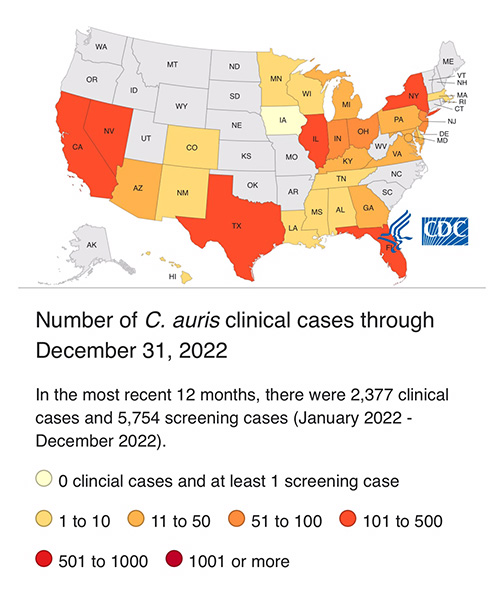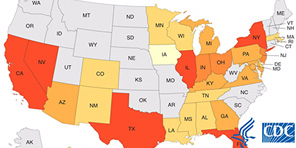ATLANTA, Georgia – The Centers for Disease Control and Prevention warned this that healthcare facilities in several countries have reported that a type of yeast called Candida auris has been causing severe illness in hospitalized patients.
Several states have reported the illness, these include 276 in Illinois. The fungus has also been reported in California, Oregon, Nevada, Texas, Florida and New York. Lesser numbers are reported in 10 other state.
No cases have been reported in Missouri as of December 31, 2022. Nationwide there have been 2,377 clinical cases and 5,754 screening cases. See map below.

In some patients, this yeast can enter the bloodstream and spread throughout the body, causing serious invasive infections. This yeast often does not respond to commonly used antifungal drugs, making infections difficult to treat. Patients who have been hospitalized in a healthcare facility a long time, have a central venous catheter, or other lines or tubes entering their body, or have previously received antibiotics or antifungal medications, appear to be at highest risk of infection with this yeast.
Specialized laboratory methods are needed to accurately identify C. auris. Conventional laboratory techniques could lead to misidentification and inappropriate management, making it difficult to control the spread of C. auris in healthcare settings.
Because of these factors, CDC is alerting U.S. healthcare facilities to be on the lookout for C. auris in their patients.
Candida auris is an emerging fungus that presents a serious global health threat. CDC’s Mycotic Diseases Branch tracks the number of C. auris cases in the United States over time to assess the impact of prevention strategies and inform public health practices. In the United States, most cases of C. auris result from local spread within and among healthcare facilities in the same city or state. However, healthcare facilities should be on the lookout for new introductions of C. auris from patients who received healthcare elsewhere in the United States or abroad in areas with C. auris transmission.
This information is based on C. auris case counts provided by local and state health departments to the CDC every month. This data is summarized in the maps and data tables below and includes clinical C. auris cases from 2013, the year of the earliest known US case.

